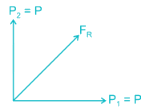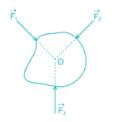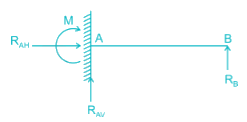Engineering Mechanics - 1 - Mechanical Engineering MCQ
20 Questions MCQ Test - Engineering Mechanics - 1
The resultant of two forces each equal to P and acting at right angles is:
Which of the following conditions do not change the effect of couple?
Two car A and B moves at 54 Km/hr in the same direction and the car B is 300 m ahead of car A. If the car A is accelerated at 6 m/s2 while car B continue to move with the same velocity, calculate the time taken by car A to overtake car B:
A ball of mass 1 kg moving with the velocity of 2 m/s collide directly with another stationary ball of mass 2 kg and comes to rest after impact. The velocity of second baII after impact is:
Two rings of radius R and nR, made up of same material (linear mass density) have the ratio of moment of inertia about an axis passing through centre as 1 : 8. The value of n is
A 13 m ladder is placed against a smooth vertical wall with its lower end 5 m from the wall. What should be the coefficient of friction between the ladder and floor so that it remains in equilibrium?
The torque acting on a body, rotating with angular acceleration of ‘α’ is given by which of the following relation?
A 1.0 kg ball drops vertically onto the floor with a speed of 25 m/s. It rebounds with an initial speed of 10 m/s. The impulse action on the ball during contact will be
The area moment of inertia of a square of size 1 unit about is diagonal is
If tension in the cable supporting a lift moving downwards is half the tension when it is moving upwards, the acceleration of the lift is
The moment of inertia of a square of side (a) about an axis though its center of gravity is
Moment of inertia of an area always least with respect to
Which of the following is an example of a body undergoing translational equilibrium?
A circular disc rolls down an inclined plane, the fraction of its total energy associated with its rotation is _____
A body of mass 10 kg moving with a velocity of 1 m/s is acted upon by a force of 50 N for two seconds. The final velocity will be:
A beam is fixed at one end and is vertically supported at the other end. What is the degree of statical indeterminacy?
The angular motion of a disc is defined by the relation (θ = 3t + t3), where θ is in radians and t is in seconds. What will be the angular position after 2 seconds?
A car moving with uniform acceleration cover 450 m in a 5 second interval, and covers 700 m in the next 5 second interval. The acceleration of the car is


































